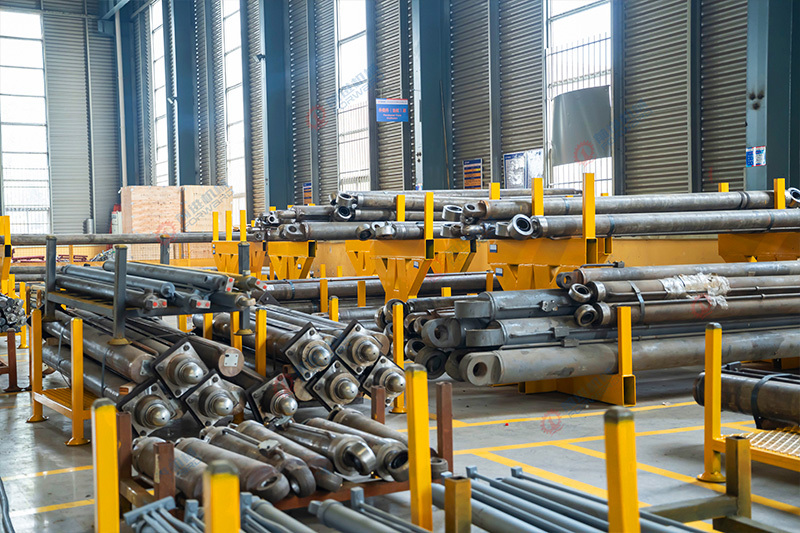Maximizing Production Efficiency with Automatic Roll Forming Machines: A Comprehensive Guide

Maximizing Production Efficiency with Automatic Roll Forming Machines
Table of Contents
1. Introduction to Automatic Roll Forming Machines
2. Understanding the Roll Forming Process
3. Key Advantages of Automatic Roll Forming Machines
3.1 Increased Production Speed
3.2 Enhanced Precision and Accuracy
3.3 Cost-Effectiveness
3.4 Versatility in Applications
4. Common Applications of Automatic Roll Forming Machines
5. Choosing the Right Automatic Roll Forming Machine
5.1 Factors to Consider
5.2 Popular Brands and Models
6. Best Practices for Operating Automatic Roll Forming Machines
7. Maintenance and Troubleshooting Tips
8. Future Trends in Roll Forming Technology
9. Frequently Asked Questions (FAQs)
10. Conclusion
1. Introduction to Automatic Roll Forming Machines
Automatic roll forming machines are revolutionizing the manufacturing landscape by significantly enhancing **production efficiency**. These machines are designed to create precise shapes and profiles from metal sheets and strips, which can be used in various industries such as construction, automotive, and appliances. The integration of automation in roll forming not only streamlines the production process but also minimizes human error, leading to higher quality outputs.
2. Understanding the Roll Forming Process
The roll forming process involves feeding strips of metal through a series of rollers that progressively shape the material into the desired profile. This continuous process allows for the efficient production of long lengths of products without the need for extensive labor. By understanding this process, companies can appreciate the efficiency gains that automatic systems provide.
3. Key Advantages of Automatic Roll Forming Machines
Automatic roll forming machines offer several **key advantages** that contribute to maximizing production efficiency.
3.1 Increased Production Speed
One of the most significant advantages is the **increased production speed** these machines provide. Automatic systems can operate continuously, significantly reducing lead times and allowing manufacturers to meet high-demand production schedules.
3.2 Enhanced Precision and Accuracy
In addition to speed, automatic roll forming machines ensure **enhanced precision and accuracy**. With the use of advanced sensors and controls, these machines can maintain consistent tolerances, which is critical for industries requiring high-quality components.
3.3 Cost-Effectiveness
The automation of the roll forming process translates into **cost-effectiveness**. While the initial investment may be higher compared to manual processes, the long-term savings from reduced labor costs, lower scrap rates, and improved production efficiency often outweigh these concerns.
3.4 Versatility in Applications
Lastly, automatic roll forming machines offer **versatility in applications**. They can produce various profiles and shapes, catering to the specific needs of different industries, from roofing and siding to structural steel components and automotive parts.
4. Common Applications of Automatic Roll Forming Machines
The versatility of automatic roll forming machines opens up a wide array of applications. Some common uses include:
- **Metal roofing and siding**: Creating panels that are durable and weather-resistant.
- **Automotive components**: Producing lightweight yet strong parts for vehicles.
- **Structural frames**: Fabricating the framework for buildings and constructions.
- **Vertical support systems**: Designing components used in shelving and racking systems.
5. Choosing the Right Automatic Roll Forming Machine
Selecting the appropriate automatic roll forming machine is crucial for maximizing production efficiency. Here are some considerations:
5.1 Factors to Consider
- **Material type**: Different machines are suitable for various metal types, including steel, aluminum, and copper.
- **Profile complexity**: Ensure the machine can handle the specific shapes you need to produce.
- **Production volume**: Evaluate the machine's output capacity concerning your production requirements.
5.2 Popular Brands and Models
Several reputable brands manufacture high-quality automatic roll forming machines. Companies like **Formtek**, **Meyer** and **B&K** are known for their reliability and advanced technology. It's essential to assess the features and specifications of different models to find one that aligns with your production goals.
6. Best Practices for Operating Automatic Roll Forming Machines
To maximize the efficiency of automatic roll forming machines, following best practices is essential:
- **Proper Training**: Ensure that all operators are well-trained in the machine's operation and safety protocols.
- **Regular Inspections**: Conduct routine checks on machine components to identify potential issues before they escalate.
- **Adjustments for Different Materials**: Learn how to adjust the machine settings for different metal types to maintain quality and efficiency.
7. Maintenance and Troubleshooting Tips
Regular maintenance is vital for the longevity and efficiency of automatic roll forming machines. Here are some tips:
- **Lubrication**: Keep all moving parts well-lubricated to reduce friction and wear.
- **Calibration**: Regularly calibrate the machine to ensure it operates within the designated specifications.
- **Common Troubleshooting**: Be prepared to handle common issues such as misalignment, uneven profiles, or mechanical failures by having a troubleshooting guide handy.
8. Future Trends in Roll Forming Technology
The roll forming industry is continually evolving, and staying updated on future trends is critical for maintaining competitive advantages. Some emerging trends include:
- **Integration of AI and machine learning**: These technologies can enhance process monitoring and predictive maintenance, leading to even greater efficiencies.
- **Sustainability**: Increased focus on eco-friendly manufacturing processes will influence the design and materials used in roll forming.
- **Customization**: Demand for customized profiles is rising, prompting manufacturers to adopt flexible roll forming technologies.
9. Frequently Asked Questions (FAQs)
1. What is an automatic roll forming machine?
An automatic roll forming machine is a sophisticated piece of equipment that shapes metal strips into specific profiles through a series of rollers, often using automated controls for precision.
2. How does roll forming differ from other metal forming processes?
Unlike other processes, roll forming operates continuously and produces long lengths of uniform profiles, making it highly efficient for high-volume production.
3. What materials can be processed with roll forming machines?
Roll forming machines can handle various metals, including steel, aluminum, and stainless steel.
4. How do I maintain my automatic roll forming machine?
Regular maintenance involves lubrication, calibration, and routine inspections to ensure optimal performance.
5. What are the cost implications of investing in automatic roll forming machines?
While the initial investment may be significant, the long-term savings from increased efficiency, reduced labor costs, and improved product quality often justify the expense.
10. Conclusion
In conclusion, automatic roll forming machines are a vital component for manufacturers looking to maximize their production efficiency. By understanding the roll forming process, recognizing the advantages of automation, and implementing best practices, businesses can significantly enhance their operational capabilities. As technology advances, staying informed about emerging trends will also help manufacturers maintain their competitive edge in a rapidly evolving market. Investing in automatic roll forming technology is not just a strategic move; it sets the foundation for future growth and success.
Key words:
recommend News
Share



